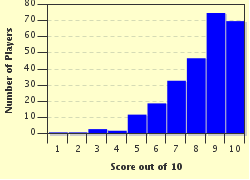Quiz Answer Key and Fun Facts
1. Doing sums is very boring. The same applies to repetitive calculations. The chief Babylonian accountant had a similar problem, so he asked his technicians to come up with something that would help him with his calculations. What was the name of the computing device that first appeared in Babylon?
2. Who was the world renowned French mathematician who devised what is thought to be the first digital computer in 1642?
3. Charles Babbage, who is also regarded as the "Father of Computing", was fed up of doing boring calculations that were mostly the same thing repeated over and over. He put his thinking cap on and designed a calculating machine that would perform long calculations automatically. What was the name of the first machine that he designed?
4. The next major step in the automated computer was the development of something that was widely used for nearly a hundred years. What did Herman Hollerith and James Power develop in 1890?
5. War always creates opportunities, and World War II was no exception. There was a need for storing information about new weapons and tests that were performed with them. What was the name of the computer that was built at the Moore school of Electrical Engineering of the University of Pennsylvania in 1942?
6. The first computer that was used for anything other than military purposes was introduced on June 14, 1951. What was the name of the computer that was designed by J. Presper Eckert and John Mauchly?
7. It wasn't long before IBM stepped into the commercial computer market with the IBM 650 which was described as the "Workhorse of Modern Industry". By the way what does IBM stand for?
8. In 1958 there was another break-through. Jack Kilby and Robert Noyce, working separately, came up with the Integrated Circuit. The IC meant that smaller and more powerful computers could be built. What is the IC more commonly called?
9. In 1971 a company announced the first single chip microprocessor. Model 4004 was invented by the company's engineers Federico Faggin, Ted Hoff, and Stanley Mazor. What is the name of this company that completely changed the computer market?
10. In 1981 IBM introduced the first personal computer (PC) that revolutionised the computer industry. What was the original code name of the product that conjures visions of mightiness, before it was renamed to IBM PC?
Source: Author
gme24
This quiz was reviewed by FunTrivia editor
rossian before going online.
Any errors found in FunTrivia content are routinely corrected through our feedback system.

